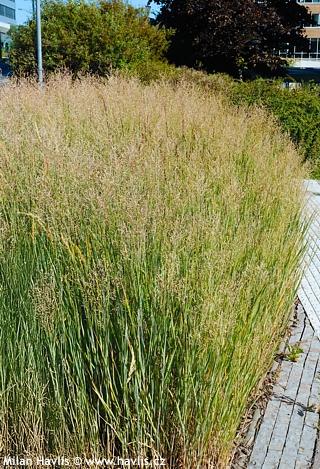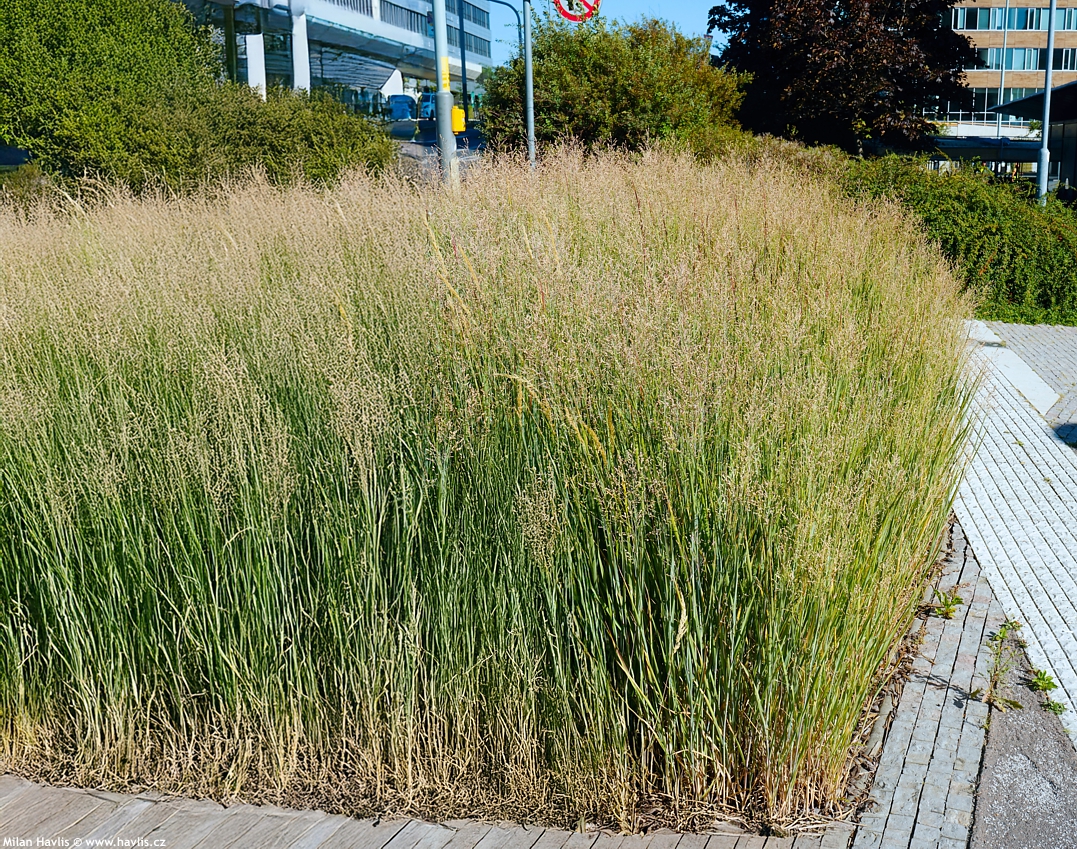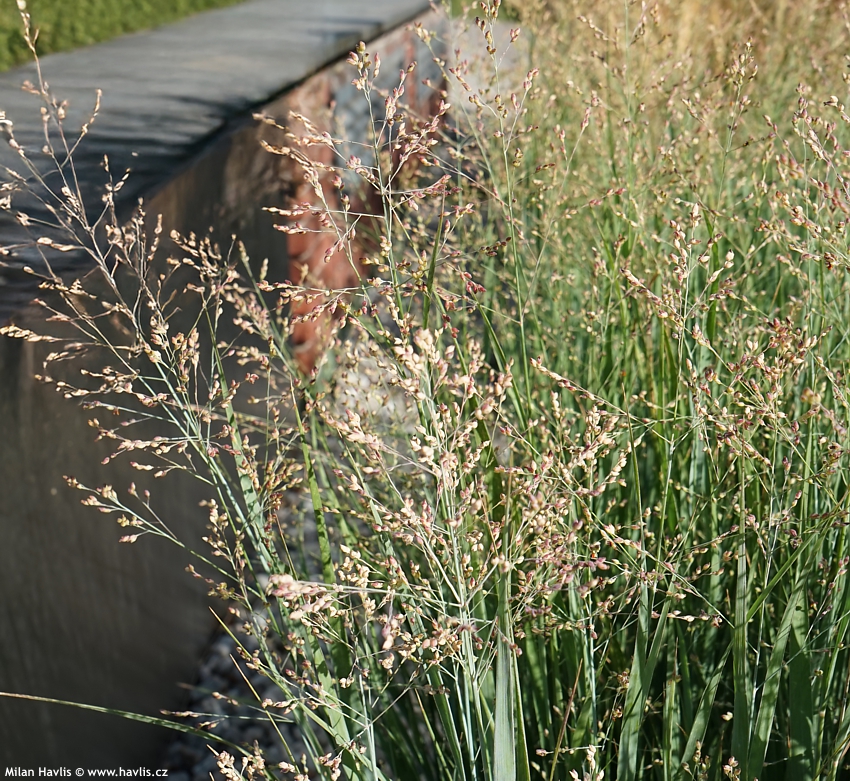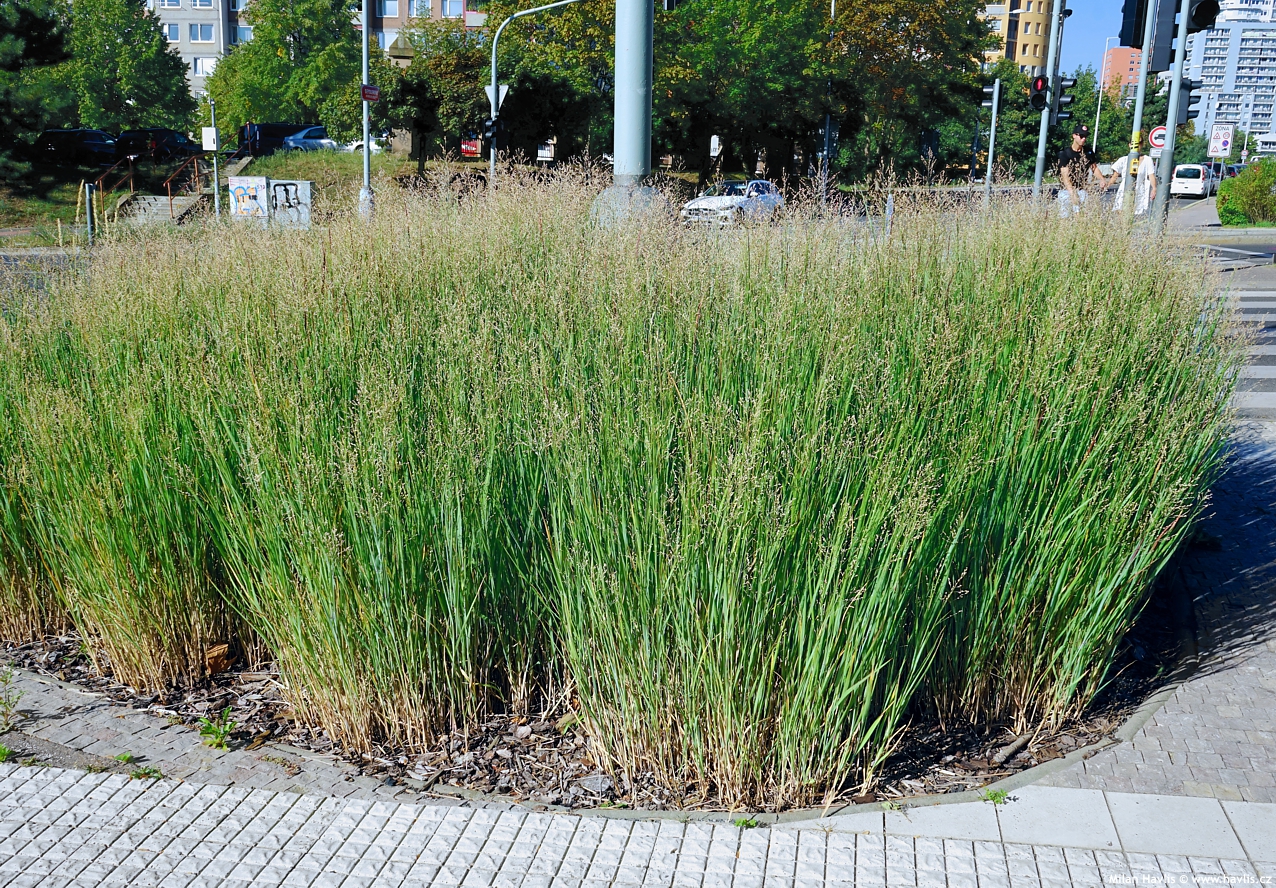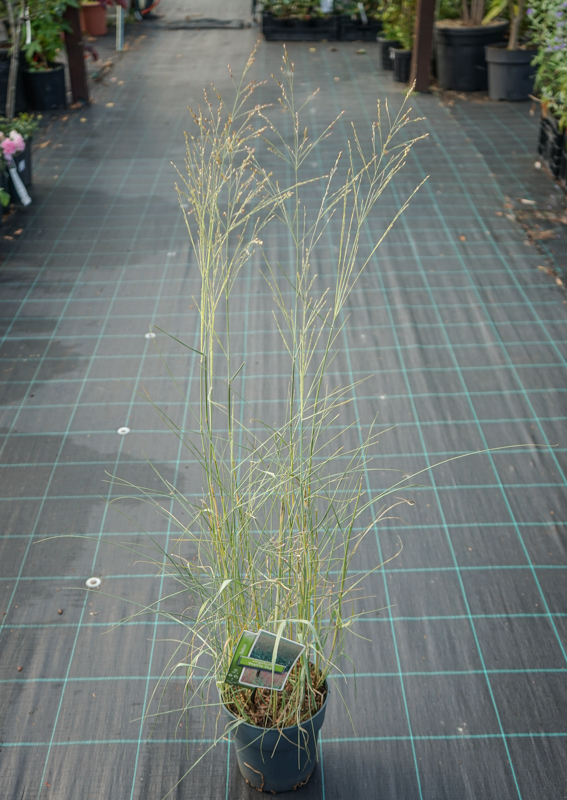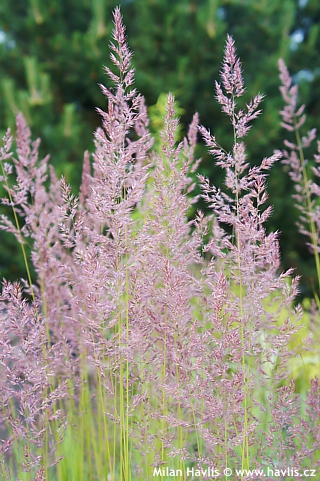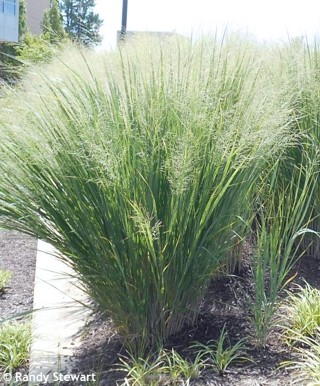Panicum virgatum 'PRAIRIE SKY' switch grass
Panicum
Crab grass is a genus of about 470 species of annual and perennial grasses. They can be found in most tropical parts of the world and temperate zones of USA and Canada. In our Central European continental climate mostly switch grass is cultivated. It comes from S. Canada, USA, and Mexico. It is an ornamental grass of variable habit, mostly upright or even congested, sometimes more open and rarely with wide leaves. It flowers profusely in late summer.
Prairie Sky is considered the bluest among the very few switch grass varieties offering blue-green colour. Its flat, 1-2 cm wide leaves are upright, only tips are weeping. From late summer appear taller stems with large, sandy beige inflorescences showing off just above the foliage level.
Switch grass is quite soil adaptable - it can take dry or moist ground, but hates water-logging. It is best grown in sunny and warm areas, no fertilizing is necessary. It is recommended to tie up the leaves before winter or to provide dry mulch. Cut back in early spring after all frosts. Fully hardy to about -34°C (USDA zone 4).
Last update: 29-05-2007, 19-02-2019
Goods are shipped all over Europe. For Russia and U.K. and for further details please read about SHIPPING OPTIONS HERE.
Are you interested in a serious discount for orders NOV-FEB? Check your options here.
THE PRICES INCLUDE VAT of 15%. For quick conversion you can use 1 CZK = approx. 0.04 EUR
- STANDARD QUALITY - Plants of this group are 1st class quality with number of branches and overall density adequate to their size and age, considering they were container grown.
- DE LUXE QUALITY - This label guarantees a luxurious quality of manually selected plants that, compared to their height and age, are exceptionally dense and beautiful.
- EXTRA - These plants are usually mature and bigger specimens with exceptional overall appearance.
- STANDARD (as described in the plant form) means a tree with a trunk of 190-210 cm and a crown at the top, unless specified differently. The commercial size for trees is their girth measured in the height of 1m from ground.
- HOBBY - These plants are of the same quality as our standard-quality plants but younger and therefore cheaper.
- SHRUB - a woody plant with branches growing bushy from the ground level.
- HALF-STANDARD or MINI-STANDARD - a small tree with shorter trunk, its size is usually specified.
- FEATHERED - These are trees with branches growing already from the base of the trunk and up along the stem.
- GRASSES and PERENNIALS - Sizes given usually read the diameter of the pot or the clump, as specified.

































